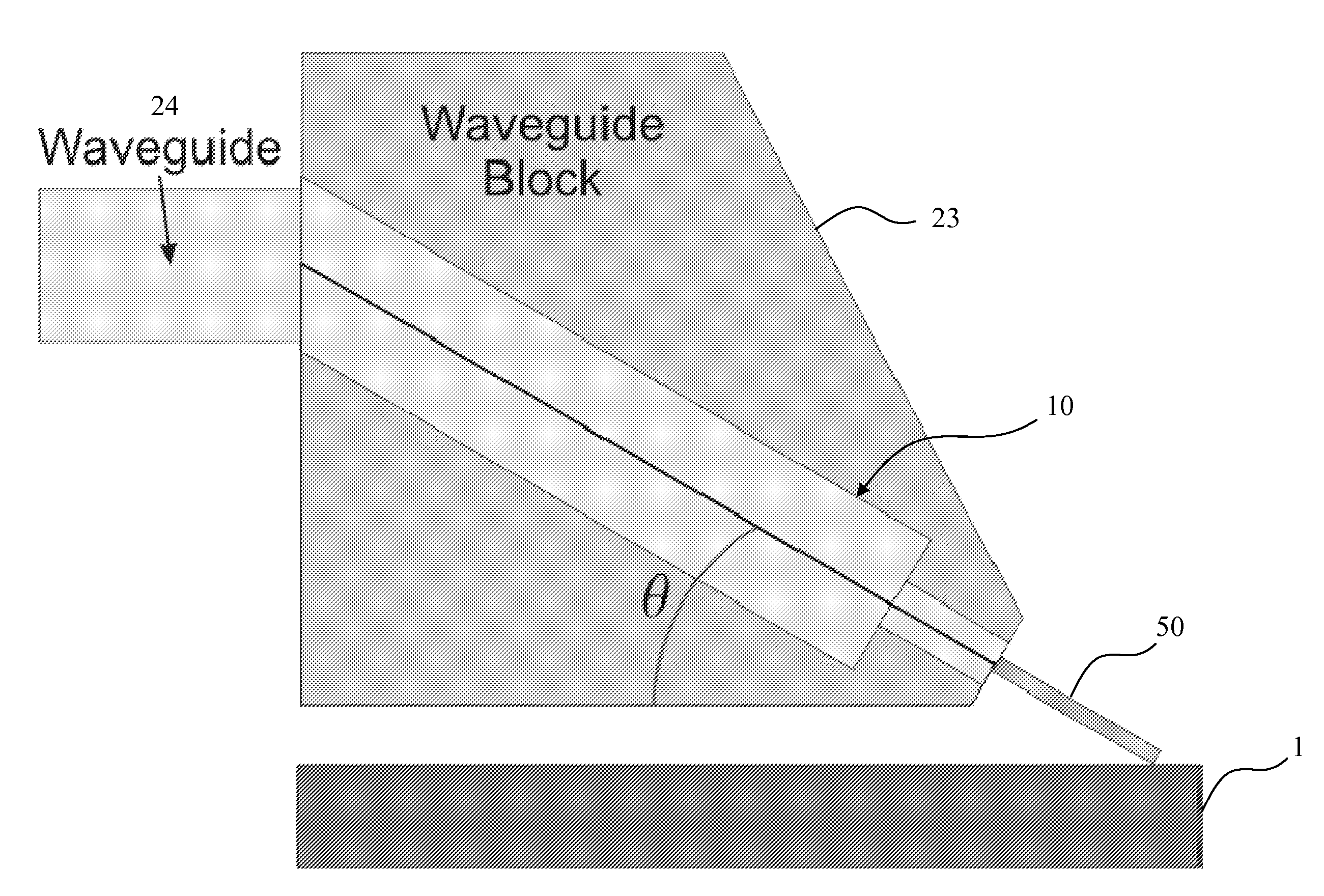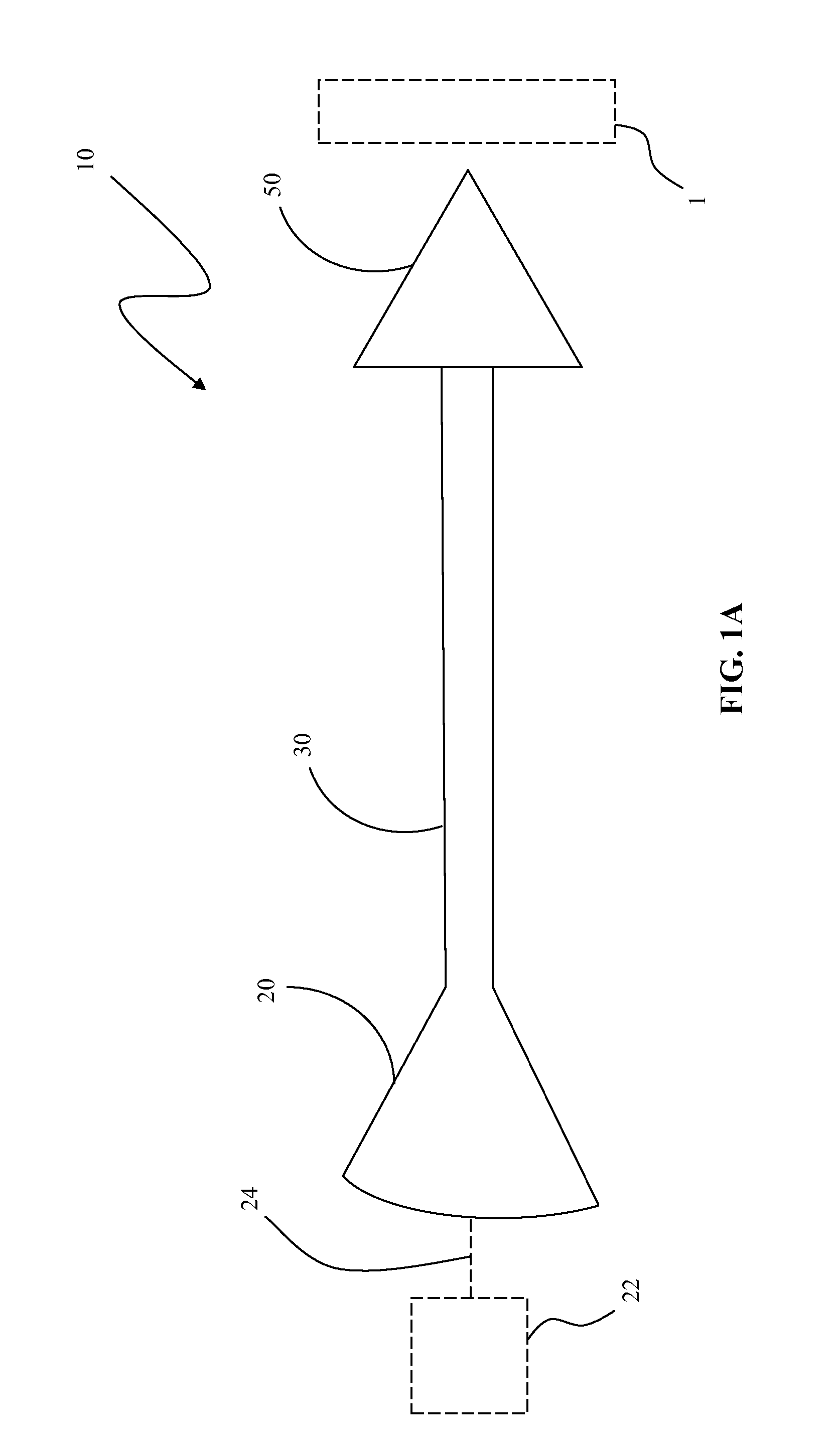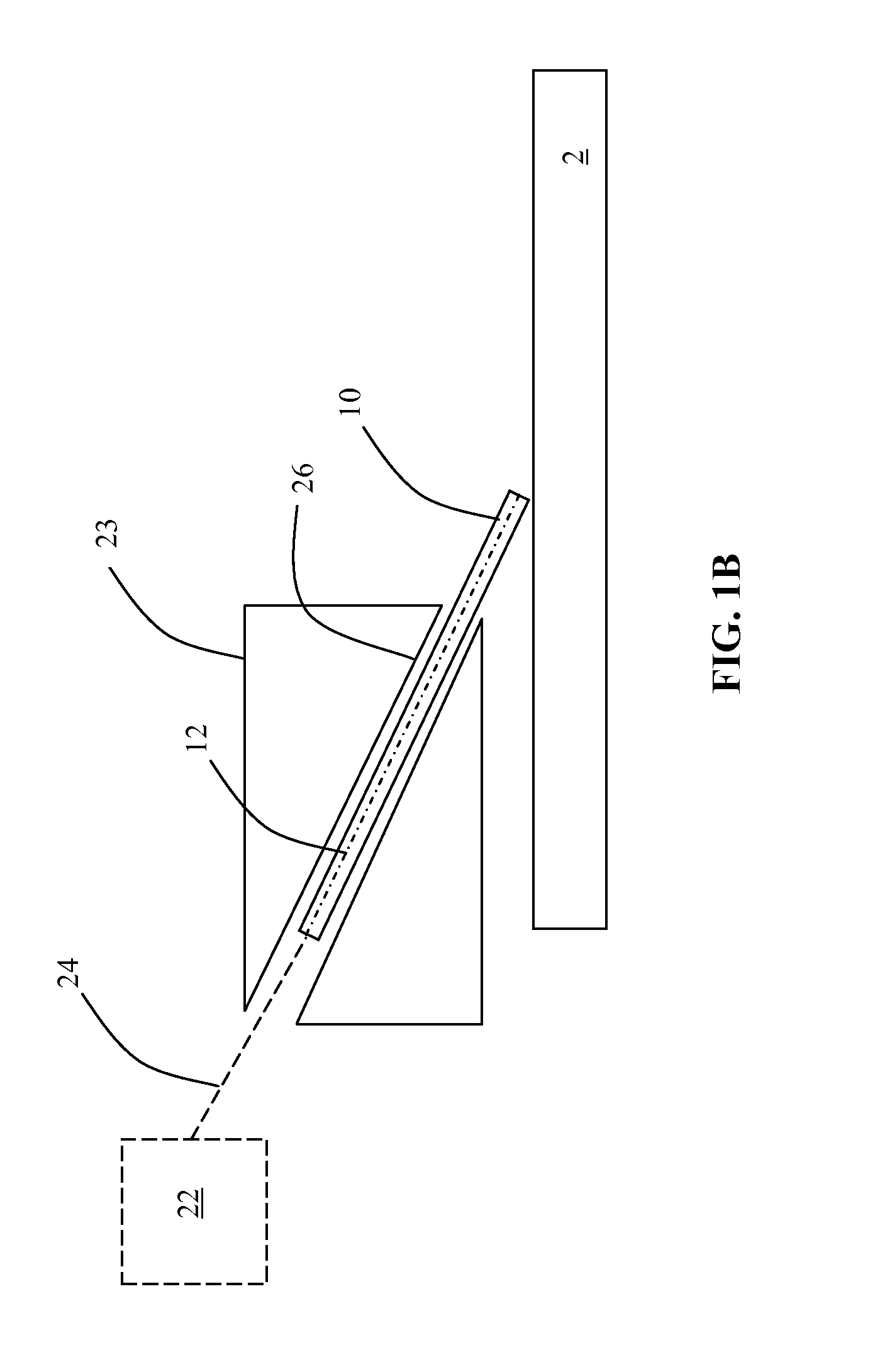Micromachined on-wafer probes and related method
- Summary
- Abstract
- Description
- Claims
- Application Information
AI Technical Summary
Benefits of technology
Problems solved by technology
Method used
Image
Examples
example 1
[0170 includes a device for probing a structure on a surface of an object substrate, said device comprising:[0171]a microfabricated compliant chip, wherein said microfabricated compliant chip comprises integrated electrical interconnects.
[0172]Example 2 may optionally include the device of example 1, wherein said microfabricated compliant chip is monolithic.
[0173]Example 3 may optionally include the device of example 1, wherein the structure on the object substrate comprises at least one of the following: microelectronic device; Microelectromechanical (MEM) device, material, or non-electronic device.
[0174]Example 4 may optionally include the device of example 1, wherein the material comprises a biological material, graphene, an atomic scale lattice structure, or an atomic scale lattice structure.
example 5
[0175 may optionally include the device of example 1, wherein the surface on the object substrate comprises at least one of the following: an integrated circuit.
[0176]Example 6 may optionally include the device of example 1, wherein the surface on the object substrate comprises at least one of the following: sample of material with appropriate contacts or some other geometric feature that has been fabricated on the substrate surface.
[0177]Example 7 may optionally include the device of example 1, wherein said integrated electrical interconnects of said microfabricated compliant chip comprise:[0178]at least one compliant beam;[0179]at least one transmission circuit; and[0180]a waveguide transition element, wherein said at least one transmission circuit suitable to electrically interconnect said at least one compliant beam with said waive guide transition element.
[0181]Example 8 may optionally include the device of example 7, wherein said compliant beam is monolithic.
[0182]Example 9 ma...
example 13
[0186 may optionally include the device of example 11, wherein said securement provided by compressive forces.
[0187]Example 14 may optionally include the device of example 13, wherein said compressive forces being adjustable.
[0188]Example 15 may optionally include the device of example 11 or 12, wherein said housing comprises an aperture configured to receive said microfabricated compliant chip.
[0189]Example 16 may optionally include the device of example 15, wherein said housing aperture comprises at least one of the following: slot, groove, recess, channel, tunnel, indentation, passage, split, or port.
[0190]Example 17 may optionally include the device of example 11 or 12, wherein said housing is configured to be re-usable when said microfabricated compliant chip is detached and replaced with another microfabricated compliant chip.
[0191]Example 18 may optionally include the device of example 7, wherein said integrated electrical interconnects of said microfabricated compliant chip ...
PUM
 Login to View More
Login to View More Abstract
Description
Claims
Application Information
 Login to View More
Login to View More - R&D
- Intellectual Property
- Life Sciences
- Materials
- Tech Scout
- Unparalleled Data Quality
- Higher Quality Content
- 60% Fewer Hallucinations
Browse by: Latest US Patents, China's latest patents, Technical Efficacy Thesaurus, Application Domain, Technology Topic, Popular Technical Reports.
© 2025 PatSnap. All rights reserved.Legal|Privacy policy|Modern Slavery Act Transparency Statement|Sitemap|About US| Contact US: help@patsnap.com



